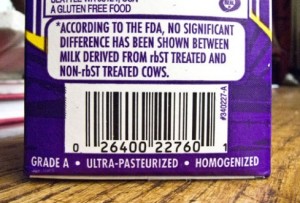Milk: Is it even healthy?
Milk, which was once thought to be an important part of a healthy diet may not be the case anymore. Growing up I was told countless times to drink milk, whether it was dinner or even breakfast. The benefits at the time made complete sense, drinking milk was a viable option for getting my daily Calcium and Vitamin D. But after my diagnosis with Ulcerative Colitis in the summer of 2008 I had to drastically alter my diet and look at potential causes to my flare ups.
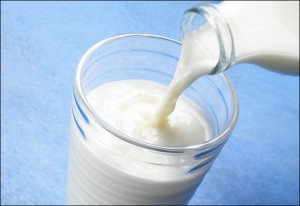
The sole purpose of this blog is to make known of the information I’ve gathered pertaining to milk consumption and to look at certain additives that can lead to cancer and other diseases. We will delve into specific components of milk and how they can be detrimental to the human body, some ideas to limit cancer cases from dairy milk, and other alternatives that can be supplemented.
The main concerning ingredient that is formed naturally in milk is IGF-1(Insulin-like Growth Factor 1). Although this hormone is naturally part of milk we also need to realize that milk is technically supposed to be for developing calves. Of all mammals on earth, humans are the only mammals that regularly ingest other mammal’s milk. Not to say humans don’t also naturally have this hormone present in their blood, but humans do not required the same amounts that calves need. The concern with IGF-1 is that in excess it promotes the growth of cancer cells, diabetes and other diseases. One studied done by The Physician Committee for Responsible Medicine in Washington DC in 1997 said,“Regular milk ingestion after weaning could possibly produce enough IGF-1 in mammary tissue to encourage cell division, increasing the risk of cancer.”
The negative effects associated with milk and other dairy products haven’t always been this way. It wasn’t until the milk industry realized that adding rBSt or Bovine Somatotropin growth hormone levels in dairy cows could actually increase milk production. This increase was by roughly 10-15%, but coincides with a ten-fold increase levels of IGF-1.
With this revelation we’ve seen a significant annual increase production of milk by doing so. Which has led to an increase profit for the industry in the U.S. Currently for comparison purposes in the UK milk industry their total annual revenue was £2.7bn or 4.53bn dollars. Just to put in perspective how profitable the milk industry is, currently in the UK that is more than the combined value of beef, pig, poultry, and fresh vegetable revenue! One thing to note is that the unlike the US, the UK has actually banned the use of rBST in milk production due to the side effects associated to the increase of IGF-1, and it’s actually against the law to buy milk made in the U.S. Another key point to note when we are analyzing the composition of milk are the trends humans have after weaning.
This is a critical argument to consider when determining if milk is a feasible source of nutrition after weaning. Much of the world is lactose intolerant after the weaning process, which means that can’t properly digest the natural milk sugar. Over the last thousands of years humans have been consuming dairy products,but still much of the population has not fully adapted to breaking down the lactose. Across the world the average is 7 out of 10 people are lactose
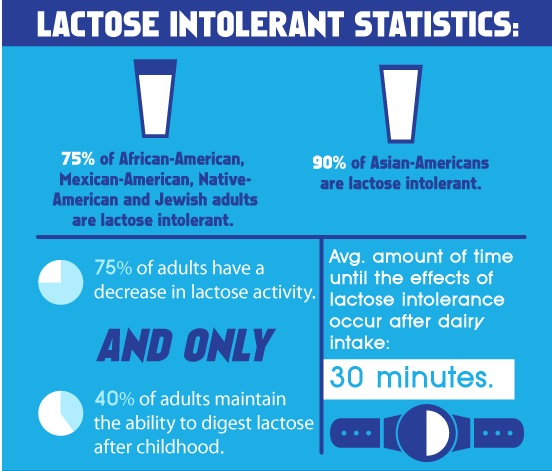
intolerant. This fact alone was quite astonishing considering that a small percentage of roughly 10% of individuals in the US are Lactose Intolerant compared to around 90-95% considered to be in Asian countries. Although this relationship is thought-provoking in terms of potential factors that could contribute to this, the main point I’m trying to question is,” Why do we continually consume milk after weaning if a majority of the population cannot properly digest it?” In other words, what benefits do we see that gives us a logical argument to justify drinking it? Yes, the benefits of Calcium and Vitamin D could be a viable argument, but many other foods actually contain better forms of those substances that can be digested more readily.
Interestingly, plant sources that are considered to be dark leafy greens,
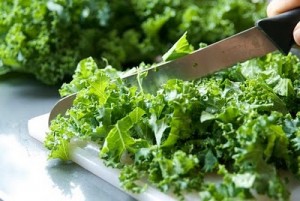
have calcium that can be more readily absorbed than the calcium in milk. So the argument that you drink milk only because it is “the best” source for Calcium and Vitamin D is invalid. Many pro-dairy lobbies will argue that drinking milk provides increase to bone health, but this may not be the case either. Unfortunately we can correlate drinking milk with prevention of osteoporosis or a condition which bones become brittle because American women on average are one of the largest consumers of calcium, but have one of the highest diagnosing of osteoporosis in the world. The main idea is that milk is not the end all be all drink to staying healthy. There are many known connections between IGF-1 in milk which contains rBST, and other forms of cancer and diseases like diabetes. The main goal of this is not to connect milk with all diseases known to man because there are much more unhealthy foods. Simply the point is that consumers should be concerned with what companies are doing to their food. The old proverb “Everything in moderation” can be put to good use here. One glass of milk isn’t going to kill you, but neither is deep-fried macaroni (Yum). The concern is that over the years the increase of hormones such as rBST used in the production of milk hasn’t been informed to the general public. So that safe percentage of these hormones you once thought you were consuming might not be the case. Not to say the milk industry hasn’t warned us with labels on the products, but in general I highly doubt that everyone can read or even find the small print that lists the product as containing rBST.
Knowing that there are large sums of money connected with the milk industry. We know there are countless of special interests groups vouching that milk is a safe part of a healthy diet. My only concern with this is that sometimes companies become too focused about maximizing profit and not about the safety of the ones consuming the products. I want to know for a fact at the end of the day that my family and friends are as healthy as they choose to be. But with all the research out there why hasn’t the milk industry taken more steps to regulate the levels of IGF-1 in their milk? Doing this would be a simple way to solve the growing relationship between hormones in milk and breast, ovarian, prostate, colorectal cancers, as well as other diseases. Providing the consumers with the knowledge up front to help them justify whether they are willing to take a risk in consuming milk treated growth hormones. With this knowledge families can go on to test alternatives such as organic, almond, rice, and oat milk. These can be incorporated into your life fairly easy although they tend to be a bit more expensive than standard milk. They key is to find a comfortable solution even if you choose to continue to drink dairy milk.
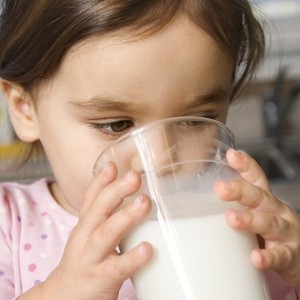
In summary, the goal of this page was to give you some insight into what you actually might be consuming. In the end hopefully it makes you more motivated to understand what you are putting inside you on a daily basis. We need to remember the strong linkage between levels of IGF-1 in milk and forms of cancer is only one piece of the puzzle. Although this correlation is strong it’s important to take into account that cancer in its self is an extremely complex disease that can’t be fully associated to just one single hormone. Both personal genetics as well as lifestyle can impact the extensiveness of cancer overall. Moderation combined with variety is the key to trying to eating healthy. There are many alternatives to milk out there and other foods that do a great job of providing the vitamins and nutrients you need. So take advantage of that.
Works Cited:
Chagas, Carlos Ea, Marcelo M. Rogero, and Lígia A. Martini. “Evaluating the Links between Intake of Milk/dairy Products and Cancer.” Nutrition Reviews 70.5 (2012): 294-300. EBSCO. Web. 19 Apr. 2014.
Ganmaa, Davaasambuu, Xiaohui Cui, Diane Feskanich, Susan E. Hankinson, and Walter C. Willett. “Milk, Dairy Intake and Risk of Endometrial Cancer: A 26-year Follow-up.” International Journal of Cancer (2011): N/a. Print.
Reflection:
Over the past semester I was lucky enough to have to opportunity to create both a multimodal research paper as well as my own blog. This assignment was my first real experience working a blog site like WordPress ®. The reason I felt this corresponded to the electronic and visual modes of communication was because it incorporated both the visual side of laying out your blog site, editing specific visual settings, and positioning of media, but also the electronic side of creating hyperlinks, adding images, and widgets. I’m definitely not a master at blogging by any means, but I feel like I have a grasp on the basics. The benefits to gaining this knowledge with drastically increase my aptitude for being hired as media and the use of technology comes increasingly more important in the country. Having experience working with a blog and manage a webpage will give us an edge in this day and age. I hope in the future I’ll have the chance to work and expand upon my knowledge within this growing part of communication.

